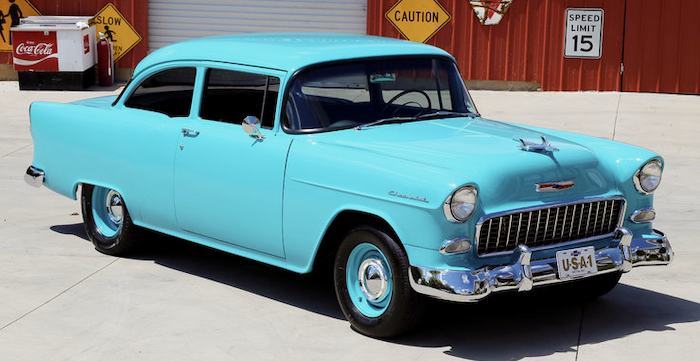During the 1950s and surrounding decades General Motors dominated the American automobile market and reaped financial rewards accordingly. Those also were the days when noticeable annual facelifts of existing designs were common and expected by the buying public. Mid-decade, GM elected to focus its facelifts on cars' front ends, though rear parts of fenders also saw shape changes. (Side chrome trim and paint color zones were changed yearly because these were cheap to implement.)
But 1957 A-body Chevrolets and Pontiacs received more expensive modifications just for that one model year. Those brands were given new bodies for 1958 and were rebodied again for 1959 when GM was forced to react to Chrysler's sensational 1957 redesigns.
Why such an expensive facelift intended for just one model year? GM could certainly afford it, but was there a payoff? The payoff might have been that GM management was aware that arch-competitor Ford would be redesigned for 1957 (and nicely so), so Chevrolets needed to seem more freshened than normal. I should add that combined Chevrolet-Pontiac '57 model year sales were 1,848,650, and Chevy sales nearly equaled Ford's. So high production easily amortized the new tooling, and Chevrolet was not grossly embarrassed in the sales race with Ford (though it did take a moderate public relations hit).
The images below are of Chevrolet's entry-level One-Fifty two-door sedans rather than the usual Bel Air and other more upscale lines. That's because I want to focus on the bodies rather than the distracting trim: One-Fifties often lacked side trim and two-tone paint schemes.
1955 Chevrolet One-Fifty Utility Sedan, Mecum Auctions photo. The front fender of this car is slightly bent up on one side.
Another Mecum photo, this of a 1957 Chevrolet One-Fifty two-door sedan. The structural change was flattening the lower edge of the windshield. This required slightly re-shaped windshield glass. It also meant some re-tooling of the firewall-cowing structure -- the most expensive part of the body to modify.
The lowered windshield edge was part of the lowering of the hood profile. Other changes seen here are reshaped wheel openings and body lengthening (by 4.5 inches, 114.3 mm).
As best I can tell from these images, the 1955 trunk was retained while the fender was lengthened and the rear bumper redesigned
A 1955 Chevrolet One-Fifty photo of a for-sale car.
1957 Chevrolet One-Fifty, also a for-sale-car photo. The redesigned hood (retaining pervious cutlines) along with the reshaped cowling can be seen here. The grille and front fenders are new, but these were common changes for mid-1950s GM facelifts.
High viewpoint views of rear-end changes.










No comments:
Post a Comment